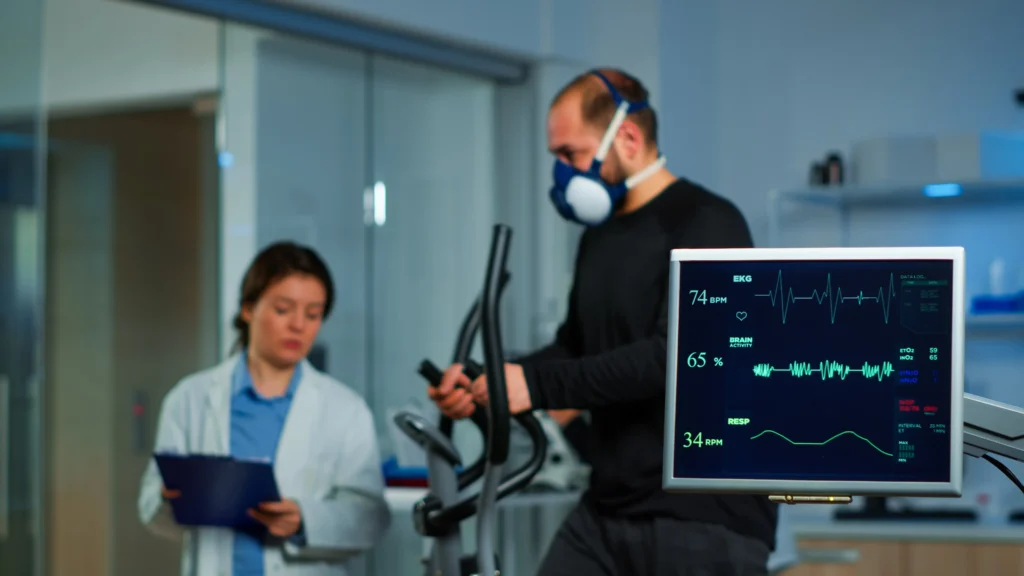Prognostics and health management (PHM) is a transformative field that is revolutionizing how industries and systems predict, manage, and optimize health and performance. By leveraging advanced technologies and methodologies, PHM provides crucial insights into the health status of systems, enabling proactive maintenance, reducing downtime, and enhancing overall reliability. This blog will delve into ten powerful insights into prognostics and health management, shedding light on its importance, applications, and benefits. Our aim is to provide a comprehensive understanding of PHM, particularly in the context of its growing significance in the United States.
1. Understanding Prognostics and Health Management
Prognostics and health management is an interdisciplinary approach that combines data analysis, machine learning, and engineering to assess the health of systems and predict their future performance. It involves the collection and analysis of data from various sensors and sources to monitor the condition of equipment, machinery, or infrastructure. By identifying potential failures before they occur, PHM enables timely interventions, thus preventing costly breakdowns and ensuring optimal performance.
What Sets PHM Apart?
Traditional maintenance practices often rely on scheduled or reactive approaches, which can be inefficient and costly. In contrast, PHM employs predictive analytics to forecast failures and maintenance needs. This proactive strategy allows organizations to address issues before they escalate, reducing downtime and extending the lifespan of assets.
Key Components of PHM
- Data Acquisition: Collecting data from sensors, equipment, and operational records.
- Data Processing: Filtering and preprocessing data to ensure accuracy and relevance.
- Health Assessment: Analyzing data to determine the current condition of the system.
- Prognostics: Predicting future health and performance based on historical data and trends.
- Decision Support: Providing actionable insights and recommendations for maintenance and operations.
2. The Evolution of Prognostics and Health Management
The concept of prognostics and health management has evolved significantly over the years. Initially, maintenance strategies were primarily reactive, with repairs conducted after failures occurred. As technology advanced, preventive maintenance emerged, focusing on regular inspections and servicing. However, it was the advent of predictive maintenance that truly marked a turning point.
From Preventive to Predictive Maintenance
Preventive maintenance involves scheduled inspections and servicing to prevent failures. While this approach is more effective than reactive maintenance, it can still be inefficient as it may lead to unnecessary maintenance or missed failures. Predictive maintenance, powered by PHM, uses data-driven insights to predict when maintenance is needed, optimizing resources and minimizing downtime.
The Role of Digital Transformation
Digital transformation has played a pivotal role in the advancement of PHM. The integration of the Internet of Things (IoT), big data analytics, and artificial intelligence has enabled more sophisticated and accurate prognostic models. These technologies allow for real-time monitoring and analysis, providing a more comprehensive view of system health and performance.

3. Benefits of Prognostics and Health Management
Implementing prognostics and health management offers numerous benefits across various industries. From manufacturing to healthcare, PHM can significantly enhance operational efficiency, safety, and cost-effectiveness.
Enhanced Reliability and Safety
By predicting potential failures and addressing them proactively, PHM improves the reliability and safety of systems. This is particularly crucial in industries such as aerospace, defense, and healthcare, where equipment failures can have severe consequences.
Cost Savings
PHM helps organizations reduce maintenance costs by optimizing maintenance schedules and preventing unexpected breakdowns. By avoiding costly repairs and minimizing downtime, businesses can achieve significant cost savings.
Increased Asset Lifespan
Regular monitoring and timely interventions can extend the lifespan of assets. By maintaining equipment in optimal condition, organizations can maximize their return on investment and reduce the need for frequent replacements.
Improved Operational Efficiency
With PHM, organizations can streamline their operations by minimizing unplanned downtime and optimizing maintenance activities. This leads to increased productivity and better resource utilization.
4. Applications of Prognostics and Health Management
Prognostics and health management is applicable across a wide range of industries, each benefiting from its predictive capabilities and proactive approach.
Aerospace and Defense
In the aerospace and defense sectors, PHM is critical for ensuring the safety and reliability of aircraft and defense systems. By monitoring the health of critical components, PHM enables timely maintenance and reduces the risk of catastrophic failures.
Manufacturing
Manufacturing industries leverage PHM to enhance the performance and longevity of machinery and equipment. Predictive maintenance helps in minimizing production downtime, optimizing maintenance schedules, and improving overall operational efficiency.
Healthcare
In healthcare, PHM is used to monitor medical devices and equipment, ensuring their optimal performance and safety. By predicting potential failures, healthcare providers can prevent disruptions in patient care and maintain high standards of service.
Energy and Utilities
PHM plays a vital role in the energy and utilities sector by monitoring the health of infrastructure such as power plants, pipelines, and grids. This ensures uninterrupted energy supply, reduces maintenance costs, and enhances overall system reliability.
5. Key Technologies in Prognostics and Health Management
Several advanced technologies underpin the effectiveness of prognostics and health management. These technologies enable the collection, analysis, and interpretation of data, providing valuable insights into system health and performance.
Internet of Things (IoT)
The IoT facilitates the collection of real-time data from various sensors and devices. This data is essential for monitoring the condition of assets and identifying potential issues. IoT-enabled devices can communicate with each other, creating a comprehensive network of interconnected systems.
Big Data Analytics
Big data analytics involves the processing and analysis of large volumes of data to uncover patterns and trends. In PHM, big data analytics helps in making sense of the vast amounts of data collected from sensors and equipment, enabling accurate health assessments and predictions.
Machine Learning and Artificial Intelligence
Machine learning and artificial intelligence algorithms are used to develop predictive models that can forecast future system behavior. These models learn from historical data and continuously improve their accuracy over time. AI-driven insights support decision-making and enable proactive maintenance.
Digital Twins
A digital twin is a virtual replica of a physical system. By creating digital twins of assets, organizations can simulate their behavior and predict potential failures. Digital twins provide a valuable platform for testing and optimizing maintenance strategies.

6. Implementing Prognostics and Health Management
Successfully implementing prognostics and health management requires a strategic approach and the right set of tools and technologies. Here are some key steps to consider when adopting PHM in your organization.
Assessing Readiness
Before implementing PHM, it’s essential to assess your organization’s readiness. This involves evaluating the existing infrastructure, data availability, and technical capabilities. Identifying any gaps or challenges can help in planning a smooth transition to PHM.
Data Collection and Integration
Effective PHM relies on accurate and comprehensive data. Ensure that your organization has the necessary sensors and data acquisition systems in place. Integrating data from various sources and ensuring its quality is crucial for reliable health assessments and predictions.
Developing Predictive Models
Developing predictive models involves using machine learning and statistical techniques to analyze historical data and identify patterns. Collaborate with data scientists and engineers to create models that can accurately predict future system behavior.
Implementing Monitoring and Analytics
Implementing a robust monitoring and analytics system is essential for real-time health assessment. Utilize IoT devices and big data analytics platforms to continuously monitor the condition of assets and provide actionable insights.
Training and Change Management
Transitioning to PHM requires training and change management efforts. Ensure that your team is well-versed in using the new tools and technologies. Foster a culture of proactive maintenance and continuous improvement.
7. Case Studies: Success Stories in Prognostics and Health Management
Several organizations have successfully implemented prognostics and health management, achieving remarkable results. Here are a few case studies that highlight the impact of PHM in different industries.
Case Study 1: Aerospace Industry
A leading aerospace company implemented PHM to monitor the health of its aircraft engines. By leveraging IoT sensors and predictive analytics, the company could detect potential engine failures early and schedule maintenance accordingly. This proactive approach resulted in a 30% reduction in maintenance costs and a 20% increase in aircraft availability.
Case Study 2: Manufacturing Sector
A manufacturing plant adopted PHM to optimize the maintenance of its production machinery. By using machine learning algorithms to predict equipment failures, the plant reduced unplanned downtime by 40%. This led to significant cost savings and improved production efficiency.
Case Study 3: Healthcare
A hospital implemented PHM to monitor its medical equipment, such as MRI machines and ventilators. By predicting potential equipment failures, the hospital ensured uninterrupted patient care and reduced maintenance costs by 25%.
Case Study 4: Energy and Utilities
An energy company used PHM to monitor the health of its power grid infrastructure. By identifying potential faults and addressing them proactively, the company minimized power outages and improved grid reliability. This resulted in a 15% reduction in maintenance expenses.
8. Challenges and Future Trends in Prognostics and Health Management
While prognostics and health management offers numerous benefits, it also comes with its own set of challenges. Addressing these challenges and staying ahead of future trends is essential for maximizing the potential of PHM.
Data Quality and Integration
Ensuring the quality and integration of data from various sources can be challenging. Inaccurate or incomplete data can lead to incorrect health assessments and predictions. Organizations need to invest in robust data management practices and tools to overcome this challenge.
Technological Complexity
Implementing PHM involves the use of advanced technologies such as IoT, big data analytics, and AI. The complexity of these technologies can pose a challenge, particularly for organizations with limited technical expertise. Collaborating with technology partners and investing in training can help mitigate this challenge.
Cybersecurity Concerns
The increased use of connected devices and data sharing in PHM raises cybersecurity concerns. Protecting sensitive data and ensuring the security of IoT devices is critical to prevent cyber threats. Implementing strong cybersecurity measures and protocols is essential.
Future Trends
The future of PHM looks promising, with several emerging trends set to shape the field. These include the use of edge computing for real-time data processing, the integration of blockchain for secure data sharing, and the development of more sophisticated AI algorithms for predictive analytics.

9. The Economic Impact of Prognostics and Health Management
The economic impact of prognostics and health management is significant, with organizations across various industries experiencing substantial cost savings and efficiency gains.
Reducing Maintenance Costs
By adopting a proactive approach to maintenance, organizations can significantly reduce their maintenance costs. Predictive maintenance helps in avoiding unnecessary repairs and minimizing the risk of costly breakdowns.
Enhancing Asset Utilization
PHM enables organizations to optimize the utilization of their assets. By ensuring that equipment and machinery are in optimal condition, organizations can maximize their productivity and achieve better returns on investment.
Minimizing Downtime
Unplanned downtime can be costly and disruptive. PHM helps in minimizing downtime by predicting potential failures and addressing them before they occur. This leads to improved operational efficiency and reduced production losses.
Boosting Competitiveness
Organizations that implement PHM gain a competitive edge by improving their operational efficiency and reducing costs. This enables them to offer better products and services, enhance customer satisfaction, and stay ahead in the market.
10. The Future of Prognostics and Health Management
As technology continues to evolve, the future of prognostics and health management looks bright. Here are some key trends and developments to watch out for in the coming years.
Advancements in AI and Machine Learning
Advancements in AI and machine learning will lead to more accurate and reliable predictive models. These models will be able to analyze larger volumes of data and provide deeper insights into system health and performance.
Integration with Digital Twins
The integration of PHM with digital twins will enable more sophisticated simulations and predictions. Digital twins will provide a virtual environment for testing and optimizing maintenance strategies, leading to better outcomes.
Expansion into New Industries
While PHM is already widely used in industries such as aerospace, manufacturing, and healthcare, its adoption is expected to expand into new industries. Sectors such as transportation, agriculture, and smart cities are likely to benefit from the predictive capabilities of PHM.
Greater Emphasis on Sustainability
Prognostics and health management will play a crucial role in promoting sustainability. By optimizing the performance and lifespan of assets, PHM can help organizations reduce their environmental impact and contribute to a more sustainable future.
Conclusion
Prognostics and health management is a powerful approach that is transforming how organizations manage the health and performance of their systems. By leveraging advanced technologies and predictive analytics, PHM enables proactive maintenance, reduces downtime, and enhances overall reliability. The benefits of PHM are far-reaching, impacting industries such as aerospace, manufacturing, healthcare, and energy.
As we look to the future, the continued evolution of PHM promises even greater advancements and opportunities. By staying ahead of emerging trends and addressing key challenges, organizations can harness the full potential of PHM to achieve a healthier, more efficient, and sustainable future.
Incorporating prognostics and health management into your organization’s maintenance strategy can lead to significant cost savings, improved operational efficiency, and enhanced asset reliability. By adopting a proactive approach and leveraging the power of data and technology, you can ensure the long-term health and performance of your systems, ultimately contributing to a healthier future for all.
Prognostics and Health Management of Industrial Assets
Prognostics & Health Management (PHM)
Prognostics and Health Management – calce, umd









